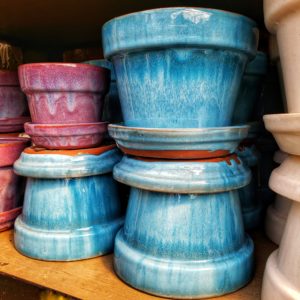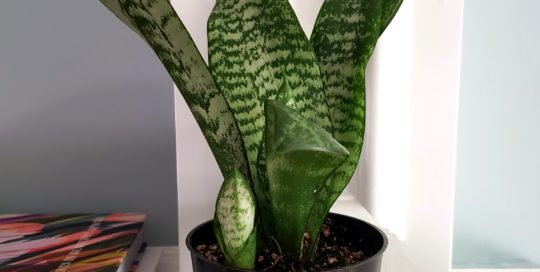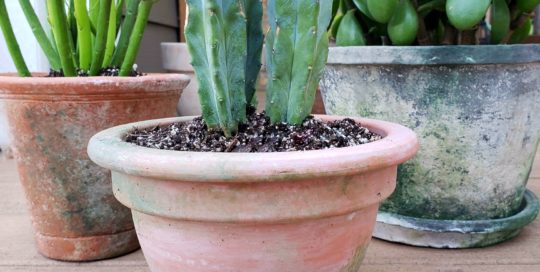How To Select The Best Pot For Your Plant
Views: 2326

Lately I’ve been running out of shelving space for my growing collection of pots and planters. No one warned me that cultivating plants comes with an inevitable pottery obsession. I get completely absorbed pairing plants with interesting pots. Distressed terracotta, sparkling ceramic, versatile nursery pots – so many good choices! Choosing the best looking pot for your plant is fun, but function matters too. Each pot provides a different growing environment. Here’s a few important details to help you select the best pot for your plant.
Terracotta – A Quick Dry Option
Terracotta, (“baked earth” in Italian), is made of a chalky clay and comes in earthy colors like amber, gray, and taupe. You can buy them smooth and unscathed, or distressed and calcified for a vintage effect. The big difference between terracotta pots and other pots is that terracotta is semi-porous. When you water your plant excess liquid seeps into the pot instead of stagnating in soil. This is why terracotta is a “quick dry” planter and a great option for succulents, or plants that like to dry out between waterings.
Glazed Ceramic – A Slow Drainer
Glazed ceramic always looks beautiful. You can find pretty much any color and style. Here’s the downside, they often lack sufficient drainage and the larger pots can be heavy. The sparkling lacquer creates a waterproof seal. This makes them perfect for tropical plants that like to stay damp. Since drainage is limited you’ll need to be careful not to over-water.
Ceramic pots with an attached saucer have the least drainage. You might see one or two VERY small holes hidden on the bottom sides between the melded pot and saucer. Only a small amount of water can escape through these openings. Some don’t have any holes at all and feature a saucer just for looks. The design can be deceiving so make sure to inspect for drainage holes if you need them.
Plastic Nursery Pot – Light And Versatile
Plastic nursery pots are cheap, available everywhere, and well aerated. Extra water exits immediately through the holes, but the soil stays damp because plastic locks in moisture. This means you can wait longer between watering than you would with quick-drying terracotta. You’re also less likely to oversaturate roots, because the holes provide ventilation.
I use plastic pots for moisture-loving pothos and philodendrons. Nearly weightless, they are easy to move around and switch out – especially when you’re handling a larger plant. Place your plastic nursery pot inside a cache pot to change the look without having to repot your plant.
Function Over Style
There is no hard rule. If your heart is set on pairing a terracotta pot with a tropical plant, then you must. Just remember to water more frequently. I have some of my succulents in plastic nursery pots and simply water them less often than the ones in terracotta. Place your plant in the pot that makes you happy, but keep this strategy in mind. Consider the details to select the best pot for your plant and save time as your collection grows. This way you can spend less time watering and more time shopping for pottery.
Meet Paula Palma
Paula has a teaching background in pilates, yoga, and meditation. She is currently studying biology as a prerequisite for further education. One of her favorite…
Paula's Recent Posts

What To Do When You Inherit A Houseplant






